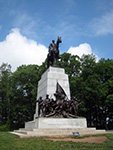 |
 |
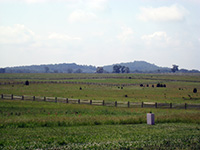 |
| State of Virginia monument, the largest of the Confederate monuments. |
General Robert E. Lee astride Traveller. |
This would have been General Lee's view of the battlefield. |
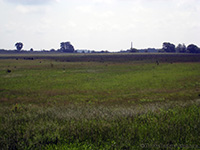 |
 |
 |
| This is the terrain you had to charge across if you were a Confederate soldier. Those monuments dotting the horizon are the Union monuments, showing the Union battle line along Cemetery Ridge. |
11th Mississippi Infantry Regiment monument. |
State of North Carolina monument, showing a wounded officer leading a charge. |
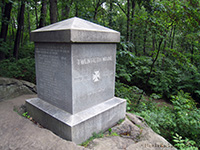 |
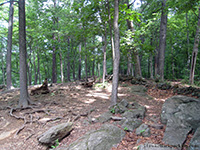 |
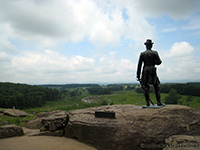 |
| 20th Maine Infantry monument on Little Round Top, where the 20th Maine under the command of Colonel Joshua Chamberlain drove back some of Longstreet's forces to maintain control of the hill. Losing it would have been a disaster for the Union. |
The terrain on Little Round Top that the 20th Maine defended. |
Brigadier General Gouverneur Warren, Chief of Engineers of the Army of the Potomac and called the Hero of Little Round Top. He recognized that Little Round Top was undefended and took the initiative to mount a defense. |
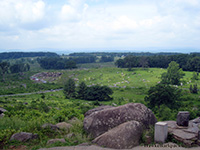 |
 |
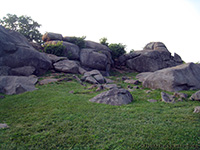 |
| View of Devil's Den from Little Round Top. |
Devil's Den terrain |
Devil's Den saw fierce fighting on the second day, and was eventually taken by General Hood's Confederate forces. |
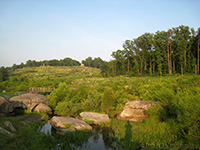 |
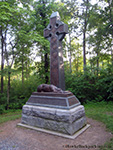 |
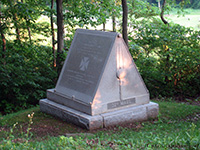 |
| View of Little Round Top from Devil's Den. |
The Irish Brigade monument. The Irish Brigade was pretty thin by the time of Gettysburg after taking heavy losses at Antietam and Fredericksburg, but they still were tasked to support Sickles' Corp on the second day, which included charging into the Wheatfield. |
32nd Massachusetts Infantry Regiment monument, designed like a pup tent. |
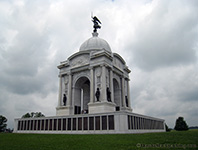 |
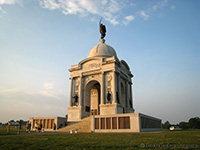 |
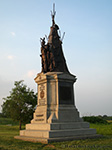 |
| State of Pennsylvania monument, the largest monument on the battlefield. It's 110 ft tall. |
State of Pennsylvania monument at sunset. |
42nd New York Infantry Regiment, known as the "Tammany Regiment". The regiment was put together by Tammany Hall, whose symbol was Chief Tammany, a Delaware Indian Chief that sided with the Americans during the Revolution. He's pictured on the monument, but had nothing to do with the battle. |
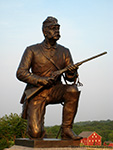 |
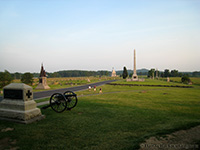 |
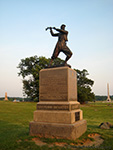 |
| 1st Pennsylvania Cavalry Regiment monument |
Monuments dotting the center of the Union line along Cemetery Ridge under the command of Hancock. This was the target of Pickett's charge on the third day. |
72nd Pennsylvania Infantry Regiment monument. You can see the Zouaves style uniform. |
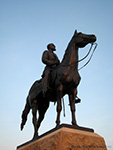 |
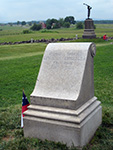 |
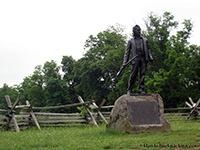 |
| Major General George Meade, the commander of the Army of the Potomac. |
Brigadier General Lewis Armistead memorial. General Armistead led his brigade as part of Pickett's charge with his hat on his sword. He and some of his men made it over the stone wall at the Angle on Cemetery Ridge, the "High Water Mark of the Confederacy", but was mortally wounded in the fighting. |
John Burns, a local in his 70s who grabbed his musket and volunteered to fight with the Iron Brigade. He was wounded, but survived the battle to become a local hero. |
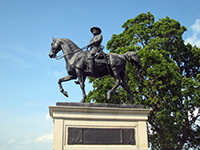 |
 |
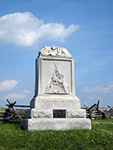 |
| Major General John Reynolds monument. He was killed on the first day of the battle by a Confederate sharpshooter while leading the 2nd Wisconsin in a charge to help out Buford's cavalry in Herbst's Woods. |
The marker at the spot where Major General John Reynolds was killed. |
150th Pennsylvania Infantry Regiment monument |
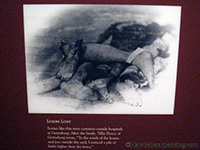 |
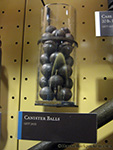 |
 |
| Pile of limbs |
If you're a Confederate soldier charging across the field, you know you're charcing right into artillery filled with that canister shot. |
Soldiers killed in action. |
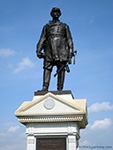 |
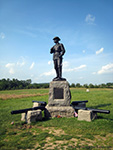 |
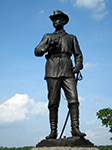 |
| Major General Abner Doubleday, who was also at Fort Sumpter for the very start of the Civil War. |
Brigadier General John Buford monument |
He commanded the 1st Division Cavalry Corps and delayed Confederate forces on the first day of the battle so that Union infantry had time to get to Gettysburg and secure the high ground. |
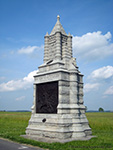 |
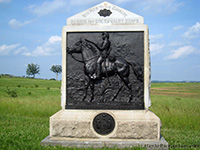 |
 |
| 6th New York Cavalry Regiment monument |
9th New York Cavalry Regiment monument |
11th Pennsylvania Infantry Regiment monument |
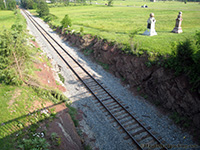 |
 |
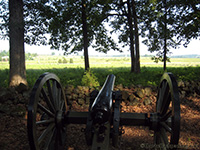 |
| The Gettysburg Railroad Cut, site of fierce fighting on the first day of the battle. |
Lutheran Theological Seminary that was used as an observation post and field hospital. |
Confederate artillery |
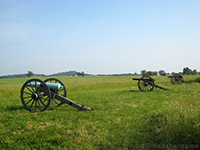 |
 |
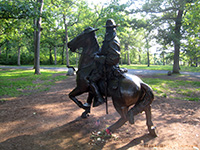 |
| Confederate artillery |
Lieutenant General James Longstreet monument |
Longstreet was responsible for assaulting Cemetery Ridge on the third day. |
 |
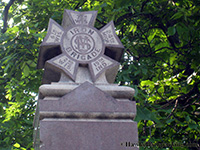 |
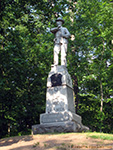 |
| 2nd Wisconsin Infantry Regiment monument, part of the Iron Brigade. |
The Iron Brigade was made up of five mid-west regiments. It suffered the highest percentage of casualties of any brigade in the Civil War, and had a 61% casualty rate at Gettysburg. |
24th Michigan Infantry Regiment monument. The 24th Michigan had more men killed/wounded at Gettysburg than any other Union regiment (80% casualty rate). |
 |
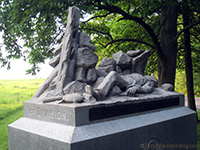 |
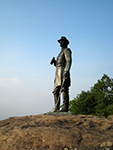 |
| Brigadier General Samuel Crawford monument, one of two men who could claim to be present at both Fort Sumpter and Appomattox. |
116th Pennsylvania Infantry Regiment monument, part of the Irish Brigade. Depicts a dead soldier behind a stone wall. |
Brigadier General Gouverneur Warren monument, on top of Little Round Top. |
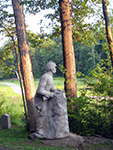 |
 |
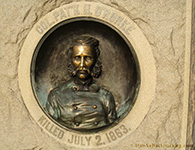 |
| 2nd Company Massachusetts Sharpshooters monument |
Looking down Little Round Top. |
140th New York Infantry Regiment monument, commanded by Colonel Patrick Henry O'Rorke who was killed on day two of the battle on top of Little Round Top. |
 |
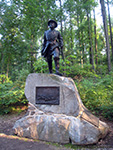 |
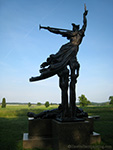 |
| 12th and 44th New York Infantry Regiments monument, the largest regimental monument on the battlefield. |
Major General William Wells monument, who commanded the 1st Vermont Cavalry Regiment. |
State of Louisiana monument |
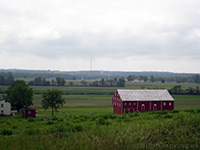 |
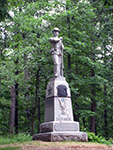 |
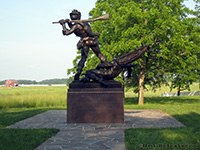 |
| Farm in the middle of the battlefield. |
24th Michigan Infantry Regiment monument |
State of Mississippi monument, showing a soldier from General Barksdale's Mississippi Brigade protecting the flag during the hand-to-hand fighting that occurred when Barksdale's regiment charged into the Peach Orchard. |
|
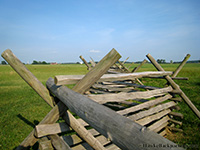 |
|
|
Wooden fence |
|